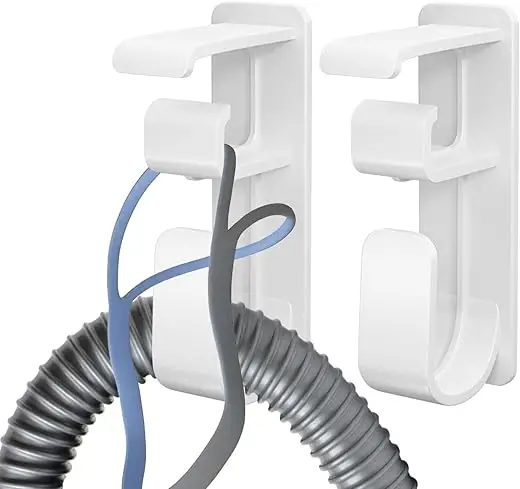The Male Sleep Apnea Crisis: Numbers Don’t Lie
Men are 2-3 times more likely to develop sleep apnea than women, with 24% of middle-aged men having moderate to severe sleep apnea. The condition affects 3% of men at age 30, 20% at age 50, and nearly 40% by age 70. Despite these staggering numbers, 80% of men with sleep apnea remain undiagnosed, dismissing symptoms as normal aging, work stress, or simply “getting older.”
The stereotype of sleep apnea – an overweight, middle-aged man who snores loudly – exists because it’s often accurate. But this oversimplification causes millions of men to miss the diagnosis. Young, fit men get sleep apnea. Thin men get sleep apnea. And most dangerously, men are culturally conditioned to ignore the warning signs until serious complications develop.
Why Men Are Sleep Apnea’s Primary Target
Anatomical Differences
Upper Airway Structure: Men’s airways are fundamentally different from women’s:
- Longer pharyngeal airway (more collapse potential)
- Larger soft palate
- More fat deposition in neck and tongue
- Different muscle fiber composition
- Less stable airway during sleep
Fat Distribution Patterns:
- Central/android obesity pattern (apple-shaped)
- Neck fat accumulation begins earlier
- Visceral fat around organs
- Upper body fat predominance
- Tongue fat deposition greater
Hormonal Influences:
- Testosterone increases upper body muscle mass
- Also increases neck circumference
- Lower progesterone (respiratory stimulant)
- Growth hormone patterns different
- Aging testosterone decline paradoxically worsens OSA
Behavioral and Cultural Factors
The “Tough It Out” Mentality:
- Men wait 2 years longer to seek help
- Dismiss symptoms as “normal”
- Avoid doctors generally
- Pride prevents CPAP acceptance
- Partner complaints ignored
Lifestyle Risk Factors:
- Higher alcohol consumption rates
- More likely to smoke
- Work stress and long hours
- Poor sleep hygiene accepted
- Physical labor neck strain
Classic Male Symptoms: The Obvious Signs
The Snoring Spectrum
Volume and Intensity:
- Room-shaking snoring (70+ decibels)
- Partner sleeps in another room
- Heard through closed doors
- Complaints from neighbors (apartments)
- Hotel room complaints
Snoring Patterns in Men:
- Starts in 30s-40s
- Progressive worsening
- Alcohol dramatically increases
- Position-dependent (worse on back)
- Partner describes as “chainsaw” or “freight train”
Witnessed Apneas: The Partner’s Perspective
What Partners Report:
- “He stops breathing for scary long times”
- “I have to shake him to breathe”
- “He sounds like he’s choking”
- “His whole body jerks when he starts breathing again”
- “I lie awake counting seconds between breaths”
Male Response to Partner Concerns:
- Denial: “I don’t snore that bad”
- Minimization: “Everyone snores”
- Deflection: “You’re too light a sleeper”
- Anger: “Stop nagging me about it”
- Delayed action: Average 7 years to seek help
The Gasping and Choking
Male Presentation:
- Violent gasping episodes
- Sitting bolt upright
- Confusion and panic
- Heart racing
- Sweating profusely
- May not remember in morning
Hidden Male Symptoms: What Men Don’t Talk About
Sexual Dysfunction: The Silent Symptom
Erectile Dysfunction (ED):
- Affects 60-70% of men with OSA
- Often the first symptom noticed
- Occurs years before other symptoms
- Men seek ED treatment, not sleep help
- Viagra treats symptom, not cause
The Connection:
- Oxygen deprivation affects nitric oxide
- Testosterone suppression
- Endothelial dysfunction
- Nerve damage
- Psychological impact
Low Libido:
- Testosterone drops 10-15% per decade with OSA
- Morning testosterone surge absent
- Too tired for intimacy
- Depression compounds issue
- Relationship strain severe
Urological Symptoms
Nocturia (Nighttime Urination):
- 3-5 bathroom trips nightly
- Attributed to “prostate problems”
- Actually from hormonal changes
- ANP hormone increased
- Not reduced by limiting fluids
Morning Urological Issues:
- Weak morning erections
- Urinary urgency
- Incomplete emptying
- Attributed to aging
- Actually sleep apnea-related
Mood and Mental Health
Male Depression Presentation:
- Anger and irritability instead of sadness
- Withdrawal from family
- Increased alcohol use
- Work performance decline
- “Short fuse” syndrome
Anxiety in Men:
- Presents as anger
- Chest tightness
- Panic attacks at night
- Worry about health
- Fear of death during sleep
Age-Specific Male Symptoms
Young Men (20s-30s): The Overlooked Population
Early Warning Signs:
- Snoring starts in college
- Weight gain post-sports
- Energy drinks dependency
- Falling asleep gaming
- Morning headaches after drinking
Career Impact:
- Falling asleep in meetings
- Poor performance reviews
- Missed promotions
- Job hopping
- Entrepreneurial failure
Relationship Red Flags:
- Partner complains about snoring early
- Separate beds in 20s-30s
- Intimacy problems
- Irritability strains relationship
- Social isolation
Middle-Aged Men (40s-50s): Peak Risk Years
Classic Presentation:
- Loud snoring for years
- Weight gain around middle
- High blood pressure
- Pre-diabetes or diabetes
- “Dad fell asleep again”
Work and Life Crisis:
- Career plateau blamed on age
- Cognitive decline noticed
- Memory problems at work
- Decreased productivity
- Early retirement considered
Health Avalanche:
- Multiple medications started
- Heart disease develops
- Metabolic syndrome
- Depression/anxiety
- Sexual dysfunction worsens
Older Men (60s+): Compounded Problems
Severe Symptoms:
- Falls from fatigue
- Confusion/memory loss
- Heart failure symptoms
- Stroke risk peaks
- Dementia concerns
Quality of Life:
- Unable to enjoy retirement
- Grandchildren avoid (grumpy)
- Travel difficult
- Driving dangerous
- Independence threatened
Male-Specific Health Consequences
Cardiovascular Impact in Men
Earlier and More Severe:
- Heart attacks in 40s-50s
- Sudden cardiac death risk 3x
- Atrial fibrillation common
- Heart failure by 60s
- Hypertension resistant to treatment
The Male Heart Attack:
- Often first symptom of OSA
- Occurs during sleep (3-6 AM)
- Monday morning peak
- Stress + OSA = deadly combo
- Younger age than expected
Testosterone and Metabolic Effects
The Vicious Cycle:
- OSA suppresses testosterone
- Low testosterone increases fat
- Fat worsens OSA
- Worse OSA further suppresses testosterone
- Cycle accelerates
Metabolic Destruction:
- Belly fat accumulation
- Muscle mass loss
- Insulin resistance
- Metabolic syndrome
- Type 2 diabetes
Cognitive Decline in Men
Executive Function Loss:
- Decision-making impaired
- Problem-solving declined
- Multitasking impossible
- Leadership skills diminished
- Innovation capacity lost
Memory Problems:
- Names forgotten
- Appointments missed
- Instructions not retained
- Learning new skills difficult
- Early retirement forced
Why Men Resist Diagnosis and Treatment
Cultural Barriers
Masculinity and Health:
- “Real men don’t complain”
- Doctors are for emergencies
- Sleep problems = weakness
- Admitting fatigue = failure
- Snoring = masculine
The Provider Pressure:
- Can’t afford to be sick
- Family depends on income
- No time for doctors
- Work comes first
- Health insurance concerns
CPAP Resistance
Male-Specific Concerns:
- “Makes me look weak”
- “Not sexy”
- “Like being on life support”
- “I’m not that old”
- “I’ll try to lose weight instead”
Compliance Challenges:
- Lower initial acceptance
- All-or-nothing mentality
- Give up quickly if difficult
- Don’t ask for help
- Partner involvement minimal
Getting Men to Seek Help: Effective Strategies
Reframe the Conversation
Instead of “Sleep Problem”:
- Performance optimization
- Energy restoration
- Cognitive enhancement
- Athletic recovery
- Productivity boost
Appeal to Priorities:
- Work performance
- Sexual health
- Heart attack prevention
- Maintaining independence
- Being there for family
The Numbers That Matter to Men
Performance Metrics:
- 23% productivity increase with treatment
- 70% reduction in car accident risk
- 50% improvement in reaction time
- 40% better memory test scores
- 60% increase in exercise capacity
Financial Impact:
- Untreated OSA costs $3,900/year in lost productivity
- Medical costs increase $5,000/year
- Car insurance higher after accidents
- Career advancement limited
- Early retirement/disability risk
Diagnostic Considerations for Men
Male-Specific Screening
Modified Questions:
- “Has your work performance declined?”
- “Do you need caffeine to function?”
- “Has your partner mentioned your snoring?”
- “Any problems in the bedroom?”
- “Feel like you’re aging too fast?”
Physical Exam Findings:
- Neck circumference >17 inches
- BMI >30 (but thin men too)
- Blood pressure >130/80
- Central obesity
- Enlarged tonsils/tongue
When to Insist on Testing
Non-Negotiable Indicators:
- Partner reports breathing stops
- Falling asleep driving
- High blood pressure + snoring
- ED + fatigue + snoring
- Family history + symptoms
Treatment Success for Men
CPAP Acceptance Strategies
Male-Friendly Approaches:
- Focus on performance gains
- Highlight technology aspects
- Competitive compliance tracking
- Before/after metrics
- Success stories from peers
Equipment Considerations:
- Smaller, less visible masks
- Travel-friendly options
- Quiet machines
- App connectivity
- Data tracking features
Lifestyle Modifications Men Will Follow
Practical Changes:
- Gym/weight training (builds testosterone)
- Limit alcohol to weekends
- Side-sleeping devices
- Adjustable beds (tech appeal)
- Sleep apps/trackers
What Doesn’t Work:
- “Just lose weight” (too vague)
- “Reduce stress” (how?)
- “Sleep more” (can’t)
- “See a therapist” (resistance)
- “Change everything” (overwhelming)
Success Stories: Men Who Got Their Lives Back
The Executive, 48
“My career was stalling. I thought I was burning out. After starting CPAP, I got promoted twice in 18 months. My thinking is clear again. I’m the leader I used to be.”
The Athlete, 35
“I couldn’t understand why my recovery was so poor. Sleep study showed severe apnea. Three months on CPAP, I’m setting PRs again. My testosterone naturally increased 40%.”
The Grandfather, 67
“My grandkids called me ‘Grumpy Grandpa.’ My wife threatened to leave. CPAP saved my marriage and my relationship with my family. I’m myself again.”
The Construction Worker, 52
“Nearly had three accidents on job sites from fatigue. Company required sleep testing. CPAP literally saved my life. Blood pressure normal for first time in years.”
Taking Action: The Male Action Plan
Week 1: Recognition
- Admit symptoms exist
- Ask partner for honest input
- Track energy levels
- Note snoring/gasping
- Document ED/urinary issues
Week 2: Research
- Take online assessments
- Read success stories
- Research sleep centers
- Check insurance coverage
- Find male-friendly providers
Week 3: Commitment
- Schedule appointment
- Complete sleep study
- Get results
- Discuss treatment
- Start therapy
Month 2-3: Optimization
- Fine-tune treatment
- Track improvements
- Address issues quickly
- Build routine
- Celebrate progress
The Bottom Line for Men
Sleep apnea isn’t a sign of weakness – ignoring it is. Real strength means taking care of your health so you can take care of others. Every night you don’t treat sleep apnea, you’re operating at a fraction of your potential.
The men who treat their sleep apnea report feeling like they’ve turned back the clock 10 years. Energy returns, thinking clears, mood improves, and yes, sexual function often normalizes. This isn’t about admitting defeat – it’s about optimizing your performance in every area of life.
Your snoring isn’t “normal.” Your fatigue isn’t “just age.” Your irritability isn’t “stress.” These are symptoms of a treatable medical condition that’s holding you back from being the man, partner, father, and professional you want to be.
Take action today. Your future self – stronger, sharper, and more energetic – will thank you.
Men’s health matters. If you recognize these symptoms, don’t wait. Schedule a sleep study today. Treatment isn’t just about adding years to your life – it’s about adding life to your years.



